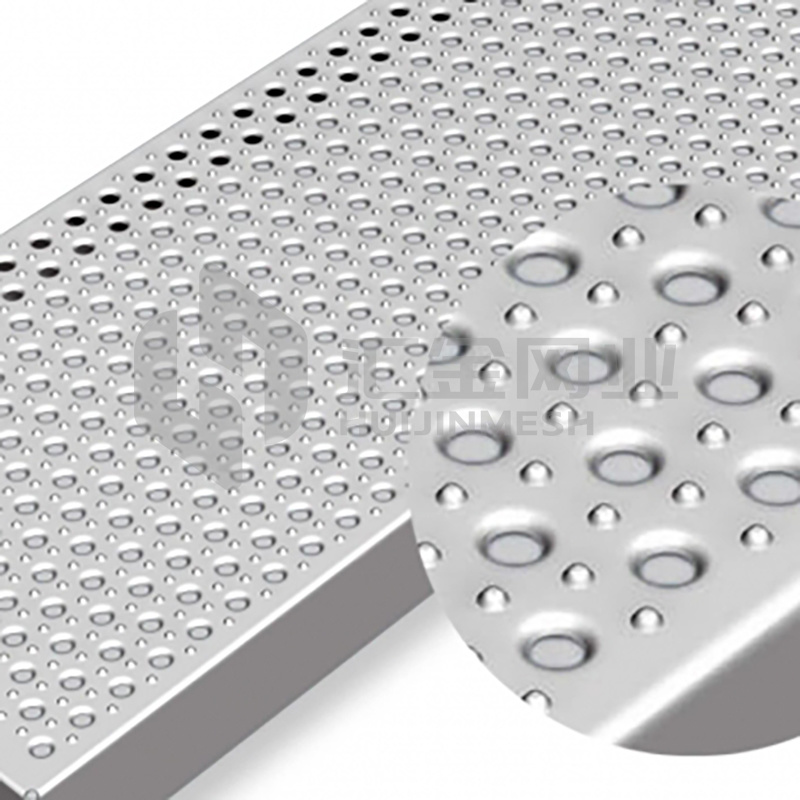
Exploring the Benefits of Safety Grating in Modern Architecture
Oct 20,2025
Exploring the Benefits of Safety Grating in Modern Architecture
In the ever-evolving realm of modern architecture, safety grating has emerged as a crucial component that not only enhances safety but also contributes to aesthetic value and functional efficiency. This article aims to provide an in-depth exploration of safety grating, its benefits, applications, and the reasons why it is a preferred choice in contemporary architectural design.
Table of Contents
- What is Safety Grating?
- Types of Safety Grating in Architecture
- Key Benefits of Safety Grating
- Applications of Safety Grating in Modern Architecture
- Design Considerations for Safety Grating
- Installation and Maintenance of Safety Grating
- Safety Grating Materials: What You Need to Know
- The Future of Safety Grating in Modern Architecture
- FAQs about Safety Grating
What is Safety Grating?
Safety grating, commonly referred to as anti-slip grating or safety mesh, is a type of flooring and decking material designed to provide traction and support in various architectural applications. Made from materials such as steel, fiberglass, and aluminum, safety grating features a series of interlocking bars or grids that create a stable walking surface while allowing for drainage, ventilation, and light penetration.
The primary purpose of safety grating is to enhance safety by reducing slip and fall accidents, particularly in environments prone to moisture, oil spills, or other hazardous conditions. Additionally, safety grating serves aesthetic purposes, providing visually appealing designs that can complement modern architecture.
Types of Safety Grating in Architecture
Safety grating comes in several types, each designed to meet specific architectural needs. Here are some of the most common types:
1. Steel Grating
Steel grating is one of the most widely used types of safety grating due to its strength and durability. It is available in various styles, including welded, swage-locked, and press-locked designs. Steel grating is ideal for industrial applications, walkways, and platforms where heavy loads are expected.
2. Fiberglass Grating
Fiberglass reinforced plastic (FRP) grating offers excellent corrosion resistance, making it suitable for environments exposed to chemicals and harsh weather. It is lightweight yet incredibly strong, making it a popular choice for pedestrian walkways, bridges, and pool decks.
3. Aluminum Grating
Aluminum grating is lightweight, corrosion-resistant, and easy to install, making it ideal for applications where weight is a concern. It is commonly used in commercial buildings, outdoor spaces, and as part of architectural features such as stairs and ramps.
Key Benefits of Safety Grating
Safety grating provides a multitude of benefits that make it an essential element in modern architectural designs.
1. Enhanced Safety
The primary advantage of safety grating is its ability to reduce slip and fall incidents. The textured surface of grating provides excellent traction, ensuring that individuals can walk safely, even in wet or slippery conditions. This feature is particularly beneficial in commercial and industrial settings where safety is a top priority.
2. Increased Durability
Most safety grating solutions are designed to withstand heavy loads and harsh environmental conditions. Materials like steel and fiberglass offer exceptional durability, making them suitable for high-traffic areas and outdoor applications that require long-lasting performance.
3. Aesthetic Versatility
Safety grating is available in various designs and finishes, allowing architects to choose options that align with their vision. Whether it’s a sleek, modern look or a more industrial aesthetic, safety grating can enhance the visual appeal of any structure.
4. Easy Maintenance
Safety grating is relatively easy to clean and maintain. Its open grid design allows debris and water to pass through, reducing the accumulation of dirt and grime. Regular maintenance typically involves simple cleaning procedures, ensuring that the grating remains functional and visually appealing.
5. Environmentally Friendly Options
Many safety grating materials, such as fiberglass, are made from recycled materials, making them an environmentally friendly choice for sustainable building practices. This aligns with the growing trend of eco-conscious architecture and construction.
Applications of Safety Grating in Modern Architecture
Safety grating is utilized in various architectural applications, providing both safety and aesthetic solutions.
1. Walkways and Platforms
Safety grating is commonly used in walkways and platforms to provide a safe, stable surface for pedestrians. Its slip-resistant properties make it ideal for outdoor pathways, commercial entrances, and industrial settings.
2. Staircases and Ramps
In multi-level buildings, safety grating is often used in staircases and ramps to ensure that individuals can navigate safely. The open design allows for ventilation and light, enhancing the overall architectural appeal.
3. Balconies and Terraces
For outdoor spaces such as balconies and terraces, safety grating provides an excellent option for flooring that is both stylish and functional. Homeowners and architects can choose decorative grating that complements the building's exterior.
4. Industrial and Commercial Spaces
In factories, warehouses, and commercial facilities, safety grating is essential for maintaining safety standards. It is often used in mezzanines, loading docks, and storage areas where heavy equipment and foot traffic are common.
Design Considerations for Safety Grating
When incorporating safety grating into architectural designs, several factors should be taken into account.
1. Load Requirements
Understanding the load-bearing requirements of a structure is crucial when selecting safety grating. Different materials and designs are suited for various load capacities, so it’s essential to choose appropriately.
2. Environmental Factors
Consider the environment where the safety grating will be installed. Factors such as exposure to chemicals, moisture, and UV rays can influence the choice of material.
3. Aesthetic Integration
Safety grating should complement the overall design of the building. Architects should consider color, texture, and pattern to ensure visual harmony.
4. Compliance with Safety Standards
It is vital to comply with local safety regulations and standards when selecting and installing safety grating. This ensures that the installation meets all necessary safety criteria.
Installation and Maintenance of Safety Grating
The installation and maintenance of safety grating involve specific practices to ensure longevity and performance.
1. Installation Process
Installation typically requires following manufacturer guidelines. Proper framing, alignment, and securing of the grating are essential for stability. Depending on the type of grating, tools and techniques may vary.
2. Routine Maintenance
Regular inspections are crucial to maintaining safety grating. This includes checking for wear and tear, cleaning debris, and ensuring that drainage is functioning properly. Timely maintenance can prevent hazards and prolong the life of the grating.
Safety Grating Materials: What You Need to Know
Choosing the right material for safety grating is a critical decision that can influence performance and aesthetics.
1. Steel Grating
Steel grating is robust and ideal for heavy-duty applications. It requires protective coatings to prevent rusting and corrosion, especially in outdoor settings.
2. Fiberglass Grating
Fiberglass grating is lightweight and resistant to corrosion. It is an excellent choice for environments where chemicals are present, but it may not support heavy loads as effectively as metal options.
3. Aluminum Grating
Aluminum grating is a versatile option that balances weight and strength. Its resistance to corrosion makes it suitable for a range of applications, including coastal areas.
The Future of Safety Grating in Modern Architecture
As architectural trends continue to evolve, the demand for innovative safety solutions will shape the future of safety grating.
1. Technological Advancements
Emerging technologies, such as 3D printing and smart materials, may revolutionize safety grating design and functionality. Future solutions may enhance safety features while reducing environmental impact.
2. Sustainable Practices
As sustainability becomes a priority in construction, safety grating manufacturers are likely to focus on eco-friendly materials and production methods. The integration of recycled materials will become increasingly common.
3. Customization and Aesthetics
The future of safety grating will likely see enhanced customization options, allowing architects to select unique designs and colors that suit their projects. This shift will enable a seamless blend of safety and style.
FAQs about Safety Grating
1. What is the primary purpose of safety grating?
Safety grating primarily serves to enhance safety by providing a slip-resistant surface for walkways, platforms, and other areas prone to hazards.
2. How do I choose the right type of safety grating for my project?
Consider factors such as load requirements, environmental exposure, and aesthetic preferences when choosing the right type of safety grating.
3. Is safety grating easy to maintain?
Yes, safety grating is relatively easy to maintain. Its open design allows for easy cleaning and reduces the buildup of debris.
4. Can safety grating be customized for architectural projects?
Absolutely! Safety grating is available in various designs, colors, and finishes, allowing for customization to suit architectural aesthetics.
5. What materials are commonly used for safety grating?
Common materials for safety grating include steel, fiberglass, and aluminum, each offering unique benefits and applications.
Conclusion
In summary, safety grating plays an indispensable role in modern architecture by enhancing safety, durability, and aesthetic appeal. With various types available and an array of applications, architects are equipped to create safe, functional, and visually stunning spaces. As technological advancements and sustainability practices continue to shape the future of construction, safety grating is set to remain a valuable asset in architectural design. By understanding its benefits and applications, we can fully appreciate the significance of safety grating in creating safer, more accessible environments for everyone.






